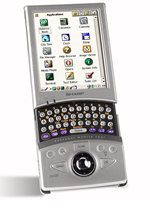'ZDNET Recommends': What exactly does it mean?
ZDNET's recommendations are based on many hours of testing, research, and comparison shopping. We gather data from the best available sources, including vendor and retailer listings as well as other relevant and independent reviews sites. And we pore over customer reviews to find out what matters to real people who already own and use the products and services we’re assessing.
When you click through from our site to a retailer and buy a product or service, we may earn affiliate commissions. This helps support our work, but does not affect what we cover or how, and it does not affect the price you pay. Neither ZDNET nor the author are compensated for these independent reviews. Indeed, we follow strict guidelines that ensure our editorial content is never influenced by advertisers.
ZDNET's editorial team writes on behalf of you, our reader. Our goal is to deliver the most accurate information and the most knowledgeable advice possible in order to help you make smarter buying decisions on tech gear and a wide array of products and services. Our editors thoroughly review and fact-check every article to ensure that our content meets the highest standards. If we have made an error or published misleading information, we will correct or clarify the article. If you see inaccuracies in our content, please report the mistake via this form.
Sharp Zaurus SL-5500


Sharp Zaurus SL-5500
pros and cons
- Infinitely customisable if you're comfortable with a command-line prompt
- built-in keyboard
- Software to synchronise with Linux desktops not included
- no Macintosh support
- requires considerable technical know-how to use many features
- tiny on-screen buttons
- Editors' review
- Specs
On the surface, Sharp appears to have made all the right moves with its new Zaurus SL-5500. Not only has it combined an outstanding, cutting-edge hardware design with top-flight components and the Linux operating system, but the company has also got software developers excited about the device -- and there are already quite a few polished applications available for this handheld. We were pretty excited, too, until we discovered a few kinks that keep the SL-5500 from becoming the strong competitor to Pocket PC devices that it almost is.
The 7.4cm by 13.8cm by 1.8cm, 194g (excluding the display protection cover) SL-5500is a bit longer and heavier than competing handhelds such as Toshiba's Pocket PC e570. But hiding under a sliding panel is a thumb keyboard that's fairly tactile and on a par with that on the BlackBerry device. This keyboard is a big plus that will make many users overlook some of the SL-5500's flaws. And if your thumbs get tired, you can also use the built-in handwriting-recognition software, just as you can do with Palm- and Pocket PC-powered devices.
In terms of hardware specifications, the SL-5500 is on a par with the best Pocket PC handhelds. Inside, you'll find a 206MHz Intel StrongARM processor, 64MB of RAM, a replaceable lithium-ion battery -- which lasted more than three hours in our tests -- and a 320 by 240-pixel reflective TFT screen. We were quite impressed with the colour and sharpness of the 3.5in. display.
Gadget-lovers will also appreciate the fact that the SL-5500 has both CompactFlash Type II and MultiMedia Card (MMC)/Secure Digital (SD) expansion slots. However, you may need a desktop SD-card reader and some technical know-how in order to reformat the file structure of the cards before the SL-5500 will recognise them. Using both slots, you can add a big SD memory card to store music, video and application files while accessing the Internet via a CompactFlash Ethernet card.
Those unfamiliar with Linux shouldn't be frightened by the SL-5500's Linux-based operating system. The Qtopia interface is surprisingly easy to use. There's a Home button -- much like the one on Palm OS devices -- that brings you to a list of applications, settings and documents. But the interface is peppered with lots of tiny icons and buttons, such as the miniscule X in the upper right corner, which is used to close applications. These icons are hard to see and are difficult to access using the stylus. If you feel comfortable with a Linux command-line prompt, you can install the X Windows interface instead of Qtopia.
The SL-5500 comes absolutely loaded with applications, including an address book, a calendar, an email program, a to-do list, the Opera Web browser, an image viewer and a media player that supports both MP3s and MPEG-1 files. If you need to get work done, there's HancomSheet, HancomWord, and HancomPresenter, which handle Excel, Word, and PowerPoint files respectively. You'll also find seven games preloaded on the SL-5500. There's a small but growing library of third-party software for the Zaurus, but unfortunately you can't install applications made for Linux desktops.
The basic PIM applications need a bit more work before they equal those of the Palm and the Pocket PC. For instance, to look up a contact you need to press the Address Book button, select Find from the Options drop-down menu, enter a few letters and press Find Next. Palm and Pocket PC both require fewer steps to get to a contact. Already, there are alternative applications that you can download to use instead of the preinstalled programs.
Top ZDNET Reviews
We were also disappointed with USB synchronisation. For Windows desktops, Sharp provides IntelliSync, which allows you to synchronise with Outlook. But there's no software for Mac users, and the program for syncing to a Linux desktop isn't included on the CD.
Installing software via the desktop is a multi-step hassle. You need to copy the application to a specific folder on your PC before launching IntelliSync to transfer the file. We much prefer the way you install Palm applications -- simply double-clicking the file, then performing a HotSync.
One final gripe: there's a two- to three-second delay when you power the SL-5500 on or off. It's not a huge issue, but we've grown accustomed to the snappy response of Palm- and Pocket PC-powered devices.
The £449.99 (inc. VAT; £382.97 ex. VAT) Zaurus SL-5500 has much to recommend it, especially its hidden thumb keyboard. By and large, the quirks and flaws we found are software related and could theoretically be fixed by Sharp or industrious developers. However, as of now, non-techies should probably stick to easier-to-use Pocket PCs such as Toshiba's Pocket PC e570. If and when Sharp corrects the SL-5500's software issues, we'll update our review and consider upping its rating. But until then, we aren't quite ready to call this a 'Pocket PC killer' -- a budding competitor, yes, but a killer, no.